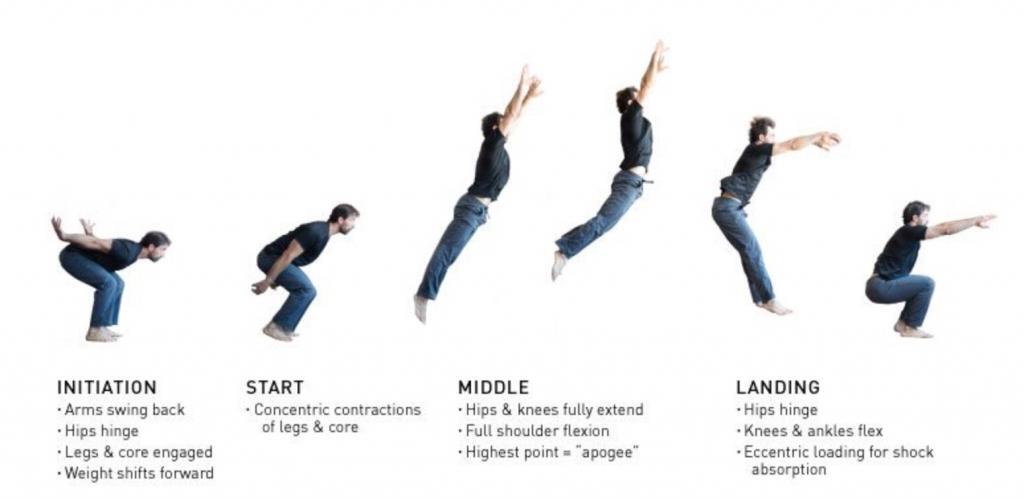The ability to jump efficiently with balance, control, and power is an important part of athletic development. Within the sport of soccer, effective jumping is necessary to win the ball in the air. In the weight room, the techniques associated with jumping are required to execute Olympic lifts such as the snatch and clean & jerk.
Proper jump technique includes 5 phases:
- Loading
- Initiation
- Extension
- Descent
- Absorption

(GMB, n.d.)
In the loading phase, the athlete initiates a dip in order to load up the muscles of the posterior chain and quads in prepration for launch. The knees and hips flex and the athlete swings his/her arms back.
In the initiation phase, the athlete explosively contracts the muscle groups in an extension to begin the jump launch.
In the extension phase, the athlete is rising up in the air to his/her greatest hight. The hips and shoulders are opening and the arms swing upward.
In the descent phase, the athlete begins to prepare for landing by reengaging a flexed position in the hips, knees, and ankles.
In the absorption phase, the athlete’s position is simlar to the loading phase. The weight is balanced on the feet with the muscles of the posterior chain and quads lengthening.
Variations of the jump movement include vertical jumps, horizontal jumps, single-leg jumps, and jumps that include rotation.
The video below includes a jump tutorial.
Landing and knee position
Correct landing position is a key element of jump technique. The position of the hips, quads, knees, shins, and feet must be in a stable, strong position to allow the athlete to perform additional movements (pivot, run, hop, jump) and for injury prevention.
A high percentage of ACL injuries occur due to improper knee positions during single-leg landing. Performed correctly, the knees should not be in a buckled in position (valgus).

(Lloyd, Meyers, & Oliver, 2011)
The picture on the left illustrates a landing position in which the knee joints are supported by the surrounding soft tissue.
The picture on the right illustrates a common fault – the knees buckled in. In this position, the knee ligaments undergo a high amount of force which may result in injury.
Video tutorial
References
GMB. (n.d.). How to jump train for power, precision, control. Retrieved September 7, 2010, from
https://gmb.io/jump-tutorial/
Lloyd, R. S., Meyers, R. W., & Oliver, J. L. (2011). The natural development and trainability of plyometric ability during childhood. Strength & Conditioning Journal, 33(2), 23-32.